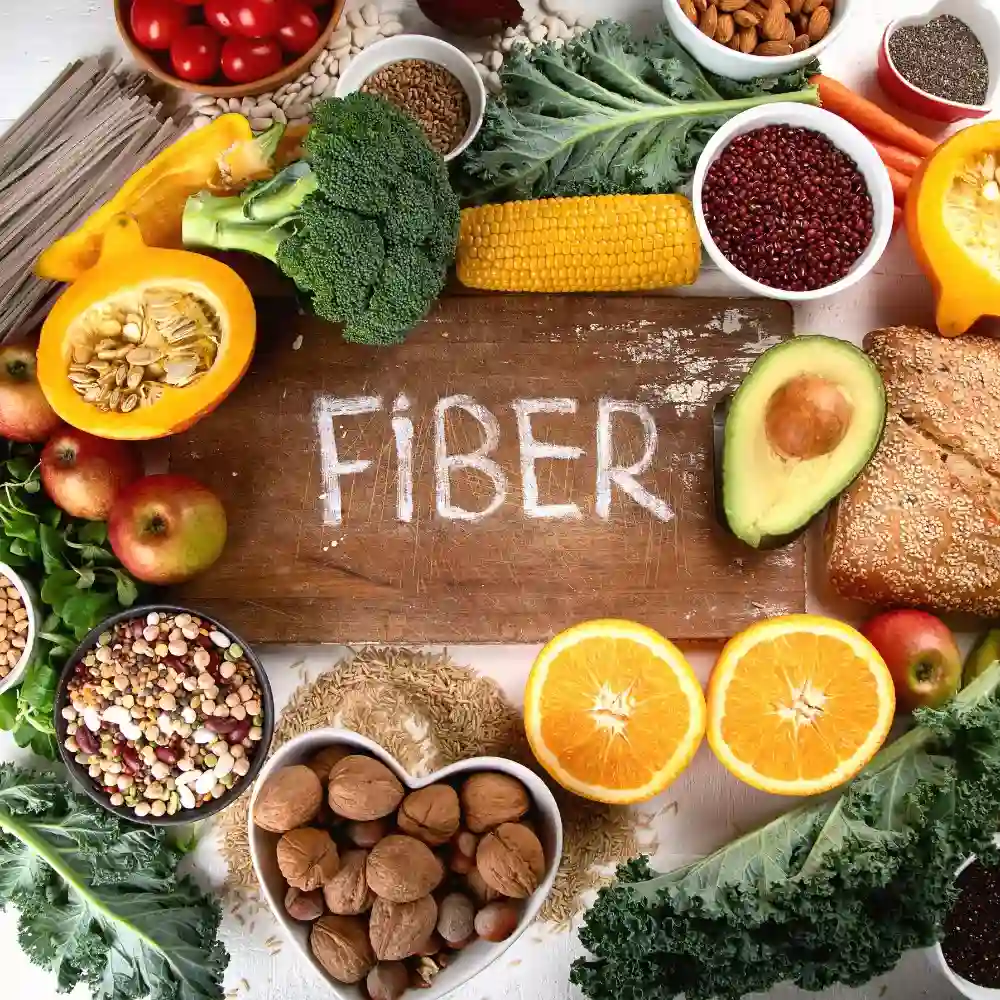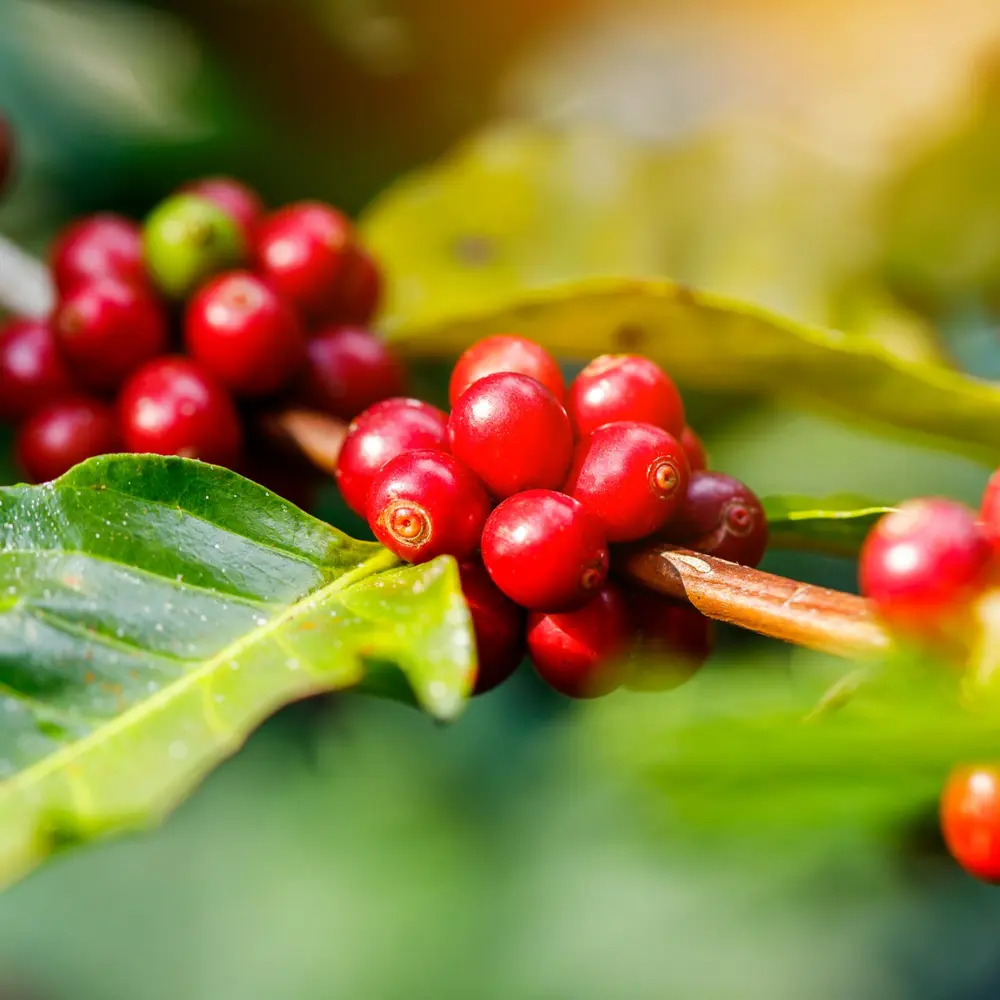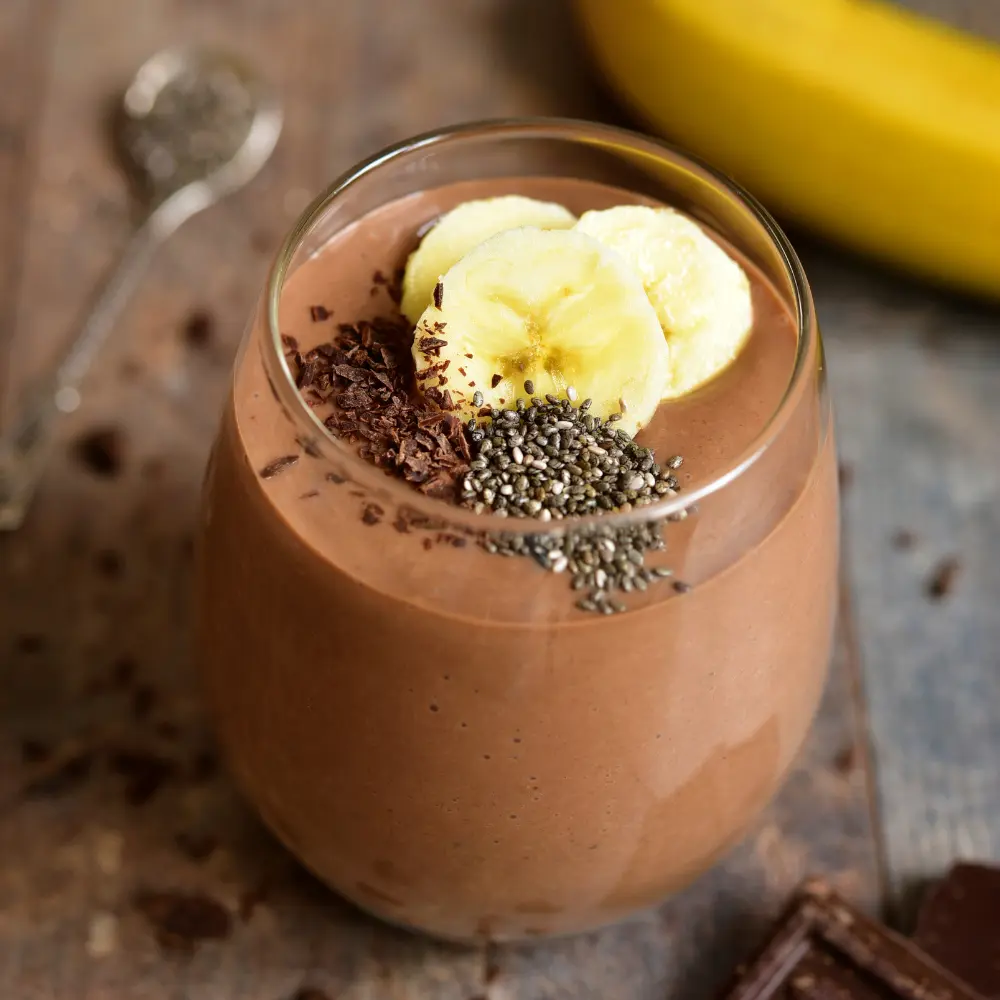There’s nothing quite like the aroma of freshly brewed coffee to start your day. But your morning cup of joe is more than just a wake-up call. Beyond its rich flavor and energy-boosting qualities, this beverage might be hiding an unexpected nutritional component: dietary fiber. So, does coffee have fiber?
It may come as a surprise to many that your favorite hot beverage can contribute to your daily fiber intake. In this comprehensive guide, we will dive deep into the world of this lovely beverage, specifically focusing on its fiber content. We’ll explore what fiber is, its importance for our health, and the varying levels of coffee fiber found in different brewing methods. From the macronutrients in coffee to the impact of brewing methods on fiber content, we’ll cover it all.
So, get comfortable, grab your cup of joe, and join us as we unravel the mysteries behind the fiber content in coffee. Let’s make your coffee breaks not only refreshing but also enlightening.
Does Coffee Have Fiber? – Key Takeaway
- Coffee Contains Fiber: Contrary to common knowledge, this drink does contain dietary fiber. Depending on the brewing method used, this nutrient’s content can vary between 1.1 grams to 1.8 grams per cup.
- Brewing Methods Matter: The fiber content of this beverage can differ based on the brewing method. Espresso, for example, typically contains more fiber than drip coffee.
- Coffee by-products are High in Fiber: Coffee grounds, husks, and fruit all contain substantial amounts of dietary fiber, opening up possibilities for additional usage and consumption.
- Coffee Fiber Contributes to Health: The fiber in this delectable drink has several potential health benefits, including promoting digestive health, aiding bowel movements, and contributing to heart health.
- Integrating Coffee and Fiber: While this beverage can contribute to daily fiber intake, it’s essential to balance it within a varied and nutritious diet. Consuming too much coffee may lead to side effects, so it’s best to enjoy it in moderation.
What is Fiber and Why is it Important?

The topic of fiber often comes up in discussions about healthy diets. Its significant role in our overall health, particularly in digestion, is something that is widely recognized. But what exactly is dietary fiber and why is it crucial to our health?
Dietary Fiber: An Overview
Dietary fiber, commonly known as “fiber,” is a form of carbohydrate obtained from plant-based foods, which our bodies struggle to break down during digestion. Unlike other carbohydrates, fiber isn’t absorbed or digested by our bodies. Instead, it passes relatively intact through our digestive system, exerting a variety of health benefits along its journey. Foods that are rich in dietary fiber include fruits, vegetables, whole grains, legumes, and interestingly, even certain beverages like coffee. The mention of fiber in coffee might sound surprising, but various research has indicated its presence in coffee beans. (1)
The Role of Fiber in a Healthy Diet

The importance of fiber in a balanced diet cannot be overstated. Here are a few ways in which fiber contributes to our health:
- Regulates Digestion: Fiber adds bulk to the diet, aiding in digestion by preventing constipation and promoting regular bowel movements. This can help prevent digestive conditions like hemorrhoids, diverticulosis, and irritable bowel syndrome.
- Supports Weight Management: High-fiber foods tend to be more filling, helping you feel satisfied longer, thereby reducing the likelihood of overeating and aiding in weight management.
- Controls Blood Sugar Levels: This nutrient, particularly soluble fiber, can slow the absorption of sugar, which can help improve blood sugar levels — a benefit especially valuable for people with diabetes.
- Lowers Cholesterol Levels: By reducing the levels of low-density lipoprotein (commonly referred to as “bad” cholesterol), soluble fiber can effectively contribute to the reduction of overall blood cholesterol levels.
- Promotes Longevity: High-fiber diets may help lower one’s risk of dying from heart disease and all cancers.
Types of Dietary Fiber

There are two categories of fiber: soluble and insoluble. Each type performs unique functions and offers different health benefits.
- Soluble Fiber: This particular kind of fiber has the ability to dissolve in water and create a substance with a gel-like consistency. Its benefits include the potential to reduce levels of cholesterol and glucose in the blood. Among the array of ingredients, one can find soluble fiber in foods such as psyllium, apples, oats, beans, peas, citrus fruits, carrots, and barley.
- Insoluble Fiber: The role of this fiber variety is to facilitate the passage of substances through the digestive system and enhance the volume of stool, making it particularly advantageous for individuals experiencing constipation or irregular bowel movements. An assortment of ingredients serves as excellent sources of insoluble fiber, including wheat bran, whole-wheat flour, nuts, beans, as well as a variety of vegetables such as cauliflower, green beans, and potatoes.
Understanding this nutrient’s role and types will assist in making more informed dietary choices, leading to better health outcomes. And while fiber’s presence in a variety of plant foods is well known, the amount of fiber in coffee is something to consider when looking at one’s overall dietary intake.
Coffee and Its Nutritional Composition
Coffee, a staple in many of our daily routines, is known more for its stimulating effect than its nutritional content. Yet, the humble coffee bean does contain a variety of nutrients that can contribute to our daily dietary intake. Let’s delve into this beverage’s nutritional composition.
Macronutrients in Coffee
Macronutrients are the nutrients our bodies need in larger amounts, including carbohydrates, proteins, and fats. When it comes to coffee, the macronutrient content is generally low, as coffee is primarily water. However, the content can vary depending on the type of coffee and preparation method.
- Carbohydrates: A typical 8-ounce serving of black coffee contains nearly zero carbohydrates. However, if you prefer your cup of joe with milk, sugar, or syrups, the carbohydrate content can increase significantly.
- Proteins: Coffee contains trace amounts of protein. An 8-ounce cup of black coffee has about 0.3 grams of protein.
- Fats: Black coffee has negligible amounts of fat. Like carbohydrates, adding cream, milk, or flavored syrups can increase the fat content.
Micronutrients in Coffee
While this drink may not contribute significantly to our macronutrient intake, it’s a different story when we look at micronutrients – the vitamins and minerals that our bodies need in smaller amounts. Coffee contains several key micronutrients, including:
- Magnesium: Coffee is a reasonable source of magnesium, a mineral important for bone health and energy production. An 8-ounce cup of coffee can provide about 7 mg of magnesium.
- Potassium: This beverage also provides a small amount of potassium, a mineral crucial for heart and muscle function. An 8-ounce cup of coffee contains approximately 116 mg of potassium.
- Niacin (vitamin B3): Coffee is rich in niacin, a B vitamin that aids in digestion, skin health, and nerve function. An 8-ounce cup of coffee can provide about 0.5 mg of niacin.
Coffee and Dietary Fiber
One surprising aspect of coffee’s nutritional profile is the presence of dietary fiber. The fiber in coffee is derived from the coffee grounds and the outer layer of the coffee bean. A study published in the Journal of Agricultural and Food Chemistry found that brewed coffee could contain up to 0.47−0.75 g of fiber per 100 mL of coffee, depending on the brewing method. Given that the daily recommended fiber intake is about 25 to 30 grams, this drink could contribute to a small portion of this.
Although the fiber content of coffee is often overlooked, it adds to the array of nutrients found in this popular beverage. Coffee, when consumed in moderation and prepared healthily, can be part of a balanced diet. The fiber in coffee also offers a unique way to supplement your daily fiber intake. So, next time you enjoy your cup of joe, remember that you’re also getting a nutritional boost!
Comparing the Fiber Content: Orange Juice vs. Coffee

When it comes to nutrition, both orange juice and coffee are well-loved parts of many people’s daily routines. However, the fiber content in these popular beverages might not be as commonly understood. Here, we will compare the dietary fiber found in orange juice and coffee.
Orange juice is renowned for its high vitamin C content, providing a substantial amount of this essential nutrient in a single glass. However, when it comes to dietary fiber, the story is quite different.
While consuming a whole orange is an effective way to incorporate this nutrient into your diet, providing about three grams per fruit, the same can’t be said for orange juice. In the juicing process, the pulp, which contains the majority of the orange’s fiber, is often discarded. As a result, a typical cup of orange juice contains 0.7g of fiber. This contributes only a small portion to the recommended daily fiber intake. (2)
In comparison, a cup of joe offers a higher amount of this nutrient. As discussed previously, depending on the brewing method, a cup of joe can contain anywhere between 1.1 grams to 1.8 grams of fiber. Therefore, coffee, somewhat surprisingly, outdoes orange juice in terms of fiber content.
Nevertheless, remember that these beverages should not be your only source of this nutrient. Whole foods like fruits, vegetables, whole grains, and legumes should make up the bulk of your dietary fiber intake. But the next time you reach for a glass of orange juice or a cup of joe, keep in mind that the latter will give you a little extra boost toward meeting your daily fiber requirements.
Coffee Brewing Methods and Fiber Content
Coffee is not only a much-loved beverage globally for its flavor and caffeine content, but it also offers nutritional benefits, including its contribution to your daily fiber intake. However, did you know that the brewing method you use can impact the amount of fiber in your cup? Let’s explore how various brewing methods affect fiber content.
Impact of Brewing Methods on Fiber

This beverage’s brewing methods are both an art and a science. The brewing technique can influence not only the taste, aroma, and body of your coffee but also the fiber content.
- Roasting and Grinding: Roasting and grinding levels can slightly impact the fiber content of coffee. For instance, certain studies have shown that Arabica beans in drip brew coffee have more soluble dietary fiber than Robusta beans. Similarly, decaffeinated drip coffee has slightly less dietary fiber than caffeinated coffee.
- Instant Coffee vs Brewed Coffee: Interestingly, instant coffee tends to contain a higher amount of fiber compared to traditional brews. Freeze-dried instant coffee can contain up to 1.8 grams of fiber per cup.
- Brewed Coffee: When it comes to traditional brews, espresso contains more fiber, with about 1.5 grams per cup, followed by filtered drip-brew coffee with approximately 1.1 grams per cup.
Filtered Coffee vs. Unfiltered Coffee

Filtered coffee and unfiltered coffee, despite the seemingly simple difference, can vary in their fiber content.
- Filtered Coffee: In filtered coffee, the water only comes into contact with the coffee grounds for a limited time. This method results in less fiber content in the coffee compared to other methods.
- Unfiltered Coffee: On the other hand, unfiltered coffee methods, like French press or Turkish coffee, allow the water and coffee grounds to be in contact for a longer time. This increases the amount of fiber extracted, resulting in higher fiber content in the final brew.
Instant Coffee and Fiber Content

Instant coffee, despite sometimes being seen as less sophisticated than brewed coffee, holds its own when it comes to fiber content.
- Convenience and Fiber: Instant coffee is made from brewed coffee that has been freeze-dried or spray-dried to remove the water content. The process concentrates on the constituents of the beverage, including fiber. As mentioned before, instant coffee can offer up to 1.8 grams of fiber per cup, making it a significant contributor to your daily fiber intake.
- Variety of Instant Coffee: Different types of instant coffee, such as instant espresso, decaf coffee, and instant cappuccino, have fiber content ranging from 0.14 to 0.65 grams per 100ml of brew. Therefore, selecting the right kind of instant coffee can help you maximize your fiber intake.
Whether you’re an espresso lover, a fan of traditional drip coffee, or prefer the convenience of instant coffee, each cup contributes to your daily fiber intake. Choosing the right brewing method, understanding the effects of filtering, and recognizing the surprisingly high fiber content in instant coffee can help you make informed decisions about your consumption.
When it comes to instant coffee, Sanka Coffee stands out with its rich flavor and the added bonus of being a fiber-rich option to further support your daily intake.
Coffee By-products and Fiber
This beverage production, whether on a commercial or home scale, results in numerous by-products, including coffee grounds, coffee fruit (or cherries), and coffee husk. These by-products are often discarded but they can be excellent sources of dietary fiber, offering potential benefits when incorporated into our diet.
Coffee Grounds: A Potential Source of Fiber

Coffee grounds, the primary by-product of coffee brewing, are known to contain a significant amount of dietary fiber. One of the prevalent byproducts in coffee production is spent coffee grounds, also known as coffee sludge. These grounds account for approximately 45% of the coffee bean processing residue. They are obtained during the treatment of coffee beans with hot water or steam, which is a crucial step in the preparation of instant coffee. This process results in an annual generation of approximately 6 million tons of coffee sludge globally, as around 50% of the world’s coffee production is dedicated to instant coffee production. From a nutritional standpoint, coffee sludge is rich in dietary fiber, containing a substantial amount of 47.3 grams per 100 grams of coffee sludge. This dietary fiber primarily consists of insoluble fiber, comprising approximately 88% of its composition.
The inclusion of coffee grounds as a source of dietary fiber in food products is gaining interest, with various studies exploring the possibilities. However, the usage of coffee grounds as a fiber supplement in our daily diet must be further investigated for safety and health impact.
Coffee Fruit and Its Fiber Content

The coffee fruit, also known as a coffee cherry, is the fruit that encases the coffee bean. The coffee fruit is often discarded during this beverage production, but it is a valuable source of dietary fiber.
The dried coffee fruit contains high levels of soluble and insoluble dietary fibers. These fibers contribute to an array of health benefits, such as promoting bowel regularity, lowering blood cholesterol levels, and controlling blood sugar levels. Several food products, including dietary supplements and functional foods, are starting to tap into the fiber-rich coffee fruit.
Coffee Husk: A High-Fiber Component
The coffee husk, or chaff, is the dried skin of the coffee fruit that comes off during the roasting process. This by-product is usually thrown away but contains high levels of dietary fiber.
According to studies, the coffee husk can contain up to 30% fiber. The husk contains both soluble and insoluble fibers, including cellulose, hemicellulose, and lignin. This underutilized by-product of the coffee industry holds significant potential as a source of dietary fiber.
As we explore further the nutritional profile of this lovely drink, it becomes evident that even the by-products of coffee, including coffee grounds, coffee fruit, and coffee husk, offer substantial dietary fiber content. Utilizing these components not only reduces waste but also enhances the health benefits we can derive from this beverage, making it a truly remarkable beverage.
The Health Benefits of Coffee-Related Fiber
As we delve deeper into the world of this delectable drink, it’s essential to understand the health benefits that coffee-related fiber provides. Let’s explore this in more detail across several key areas: digestive health, bowel movements, weight management, heart health, and general fiber consumption recommendations.
Coffee’s Influence on Digestive Health

Dietary fiber, including that found in this beverage and its by-products, is a cornerstone of a healthy digestive system. It primarily works by adding bulk to your diet, which aids in the smooth transit of food through your digestive tract.
- Prebiotic Benefits: Fiber in coffee can act as a prebiotic, a type of dietary fiber that feeds the friendly bacteria in your gut. These beneficial bacteria play an essential role in many aspects of health, including immune function, inflammation control, and even mood regulation. Therefore, the prebiotic effect of coffee’s fiber helps support overall gut health.
- Digestive Comfort: By facilitating easier digestion, dietary fiber can help reduce the occurrence of digestive discomfort and bloating, leading to better overall digestive well-being.
Coffee’s Role in Bowel Movements

Regular bowel movements are a critical indicator of digestive health, and dietary fiber plays a significant role in ensuring this regularity.
- Constipation Prevention: Dietary fiber, like that in coffee, softens your stool and adds bulk, making it easier to pass. This helps prevent constipation and promotes regular bowel movements.
- Stimulation of Muscle Contractions: The caffeine in this beverage can stimulate muscle contractions in the large intestine, similar to the effects of a meal, aiding the movement of stools through your system.
Coffee Fiber’s Role in Weight Management

Incorporating dietary fiber, including coffee fiber, into your diet can help manage your weight effectively.
- Promoting Fullness: As discussed earlier, dietary fiber promotes feelings of fullness, which can control your appetite. This helps you avoid overeating, and in turn, supports weight management strategies.
- Slow Energy Release: The fiber in coffee can slow the absorption of nutrients in the gut, providing a steady release of energy, which can prevent spikes and crashes in blood sugar and energy levels.
Coffee Fiber and Heart Health

Coffee fiber can also contribute to heart health in several ways:
- Reducing LDL Cholesterol: As mentioned before, dietary fiber can bind to cholesterol in your digestive system and help to remove it from your body. This can reduce levels of LDL (low-density lipoprotein), the so-called “bad” cholesterol, lowering the risk of heart disease.
- Blood Pressure Management: High-fiber diets, including coffee fiber, can contribute to lower blood pressure levels, a critical factor in maintaining heart health.
Discover our comprehensive article on the relationship between coffee and blood pressure, highlighting the role of high-fiber diets in maintaining lower blood pressure levels for optimal heart health.
Fiber Recommendations and Coffee Consumption
The Dietary Guidelines for Americans suggest that adults consume 25 to 30 grams of fiber per day. This delectable drink can contribute to meeting this daily recommendation.
- Coffee’s Fiber Contribution: Given the variation in fiber content between different brewing methods and coffee by-products, this beverage can provide a surprising and beneficial addition to your daily fiber intake.
- Balance and Variety: It’s important to remember that while this beverage contributes to your fiber intake, it should be complemented with other high-fiber foods like fruits, vegetables, and whole grains for a balanced diet.
To sum up, the health benefits of coffee-related fiber extend beyond a morning energy boost. With potential contributions to digestive health, bowel regularity, weight management, and heart health, the fiber in coffee plays a part in supporting our overall well-being. Embracing these benefits can lead us to appreciate this lovely beverage not just for its flavor and aroma, but also for its role in a healthy lifestyle.
Incorporating Coffee and Fiber into Your Daily Routine
As we’ve discussed, this beverage can play an essential role in our dietary intake of fiber. However, as with all dietary considerations, balance and moderation are crucial. Let’s examine how to incorporate coffee into a balanced diet, the potential health risks to consider, and some tasty yet healthful coffee recipes.
Coffee and Balanced Diets

Incorporating this beverage and its fiber content into a balanced diet requires consideration and mindful consumption.
- Variety is Key: While this drink can contribute to your daily fiber intake, it should be just one part of a varied diet. A balanced diet includes a wide range of foods that provide different nutrients. Therefore, along with coffee, consider consuming plenty of fruits, vegetables, whole grains, lean proteins, and healthy fats.
- Coffee Consumption: It’s recommended to limit your daily coffee intake to a moderate level, which is often defined as up to 3-4 cups per day for most healthy adults. This can vary depending on individual tolerance, and it’s essential to consider the caffeine content as well.
- Beneficial Pairings: Pair your cup of joe with high-fiber foods to further boost your fiber intake. Enjoy your morning cup with a whole grain muffin, or have a mid-afternoon coffee alongside some fruit for a fiber-rich snack.
Potential Health Risks to Consider
While the fiber in coffee can bring numerous health benefits, it’s essential to also be aware of potential risks associated with coffee consumption.
- Caffeine Sensitivity: People with caffeine sensitivity should monitor their coffee intake as it can cause side effects like restlessness, insomnia, and an increased heart rate.
- Digestive Issues: For some individuals, this beverage can cause stomach upset or exacerbate conditions like gastroesophageal reflux disease (GERD).
- Pregnancy and Other Health Conditions: Certain groups, including pregnant women and individuals with specific health conditions, should limit caffeine intake. Always consult with a healthcare provider if you have questions about coffee in your diet.
Tasty and Healthy Coffee Recipes

Incorporating coffee fiber into your daily routine doesn’t mean you have to sacrifice flavor. Here are some tasty and healthy ways to enjoy a cup of joe:
- Coffee Smoothie: Blend cold-brew coffee, a banana, a spoonful of almond butter, chia seeds, and a dash of cinnamon. This smoothie is a delicious way to start the day and includes a good dose of fiber from the banana and chia seeds.
- Whole Grain Coffee Muffins: Prepare your favorite whole grain muffin recipe, but replace some of the liquid with cooled brewed coffee. You’ll add a unique flavor and reap the benefits of the fiber in the whole grains and the coffee.
- Coffee Oatmeal: Stir a shot of espresso or a splash of strong-brewed coffee into your morning oatmeal. The coffee enhances the oatmeal’s flavor, and the oats contribute valuable fiber.
The fiber in coffee can contribute to a balanced diet and provide several health benefits. However, it’s crucial to ensure that this beverage consumption is part of an overall healthy and varied diet. Exploring creative ways to incorporate coffee and other fiber-rich foods into your meals and snacks can make reaching your daily fiber goals a tasty endeavor.
Conclusion
As we’ve explored in this comprehensive guide, the question, “Does coffee have fiber?” is met with a surprising and affirming ‘yes’. Although this drink is primarily known for its stimulating effects and unique flavor profiles, it also holds a hidden secret: it’s a source of dietary fiber.
The fiber content in coffee can vary, affected by factors such as brewing methods and the type of beans used. However, regardless of these variations, it’s fascinating to realize that your daily cup of joe contributes more than just caffeine to your diet. While this nutrient’s levels aren’t high enough to replace whole foods as your primary fiber source, it’s still a notable bonus to the already significant experience that coffee offers.
As you continue your journey in understanding and appreciating coffee, we hope this newfound knowledge adds an extra layer of enjoyment to your daily coffee ritual. After all, knowing that there’s more to this lovely beverage than meets the eye—particularly the fiber in coffee—can make each cup feel just a little bit more special. So, the next time you sip on your favorite brew, remember that you’re also taking a small step towards meeting your daily fiber goals. Now, isn’t that a good reason to enjoy another cup?
FAQ
Can coffee contribute to your daily fiber intake?
Yes, this beverage can contribute to your daily fiber intake, although it should not be your primary source of dietary fiber.
Is there a difference in fiber content between coffee types?
Yes, different types of coffee, like espresso, instant, and drip coffee, can have varying content of this nutrient.
What is the role of coffee fiber in digestion?
Coffee fiber can aid in digestion by promoting regular bowel movements and potentially contributing to a healthy gut microbiome.
What are the potential health risks of too much coffee?
Excessive coffee consumption may lead to side effects such as insomnia, restlessness, heart palpitations, and digestive issues.














